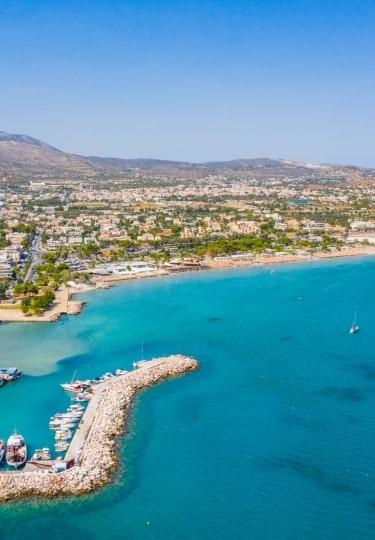Packed with ancient wonders, modern Athens extends for miles, from the foothills of Mount Parnitha to the shores of the Athenian Riviera, and from the bustling port of Piraeus in the west to high-end coastal suburbs in the east.
In this vast metropolis, there are hundreds of neighborhoods, communities, localities and small towns. To the first-time visitor, these all merge into one urban sprawl, meaning that navigating this incredible city can be quite the challenge.
Each neighborhood, though, has its own distinctive vibe, not to mention cultural and archaeological highlights. To help you make the most of the Greek capital, here are the 12 best neighborhoods in Athens.
Syntagma Square
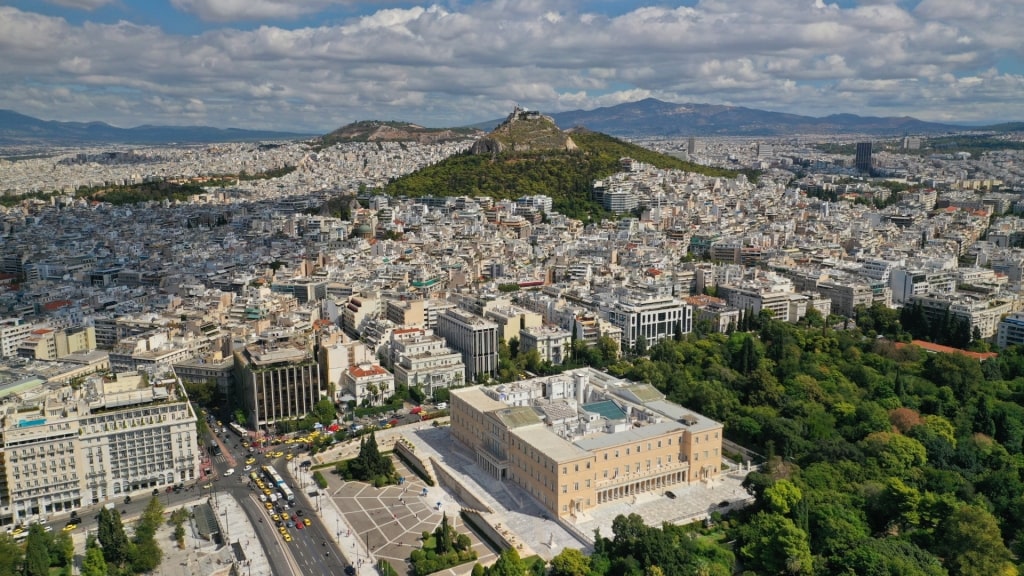
Syntagma Square
If you’ve seen images of the Presidential Guards in Athens with their pom-pom shoes, you’ll be subconsciously familiar with Syntagma Square, the notional center of Athens and home to the country’s Houses of Parliament.
The square itself has flower beds and fountains and there are a couple of luxury hotels, as well as a high number of cafés dotted around its edges.
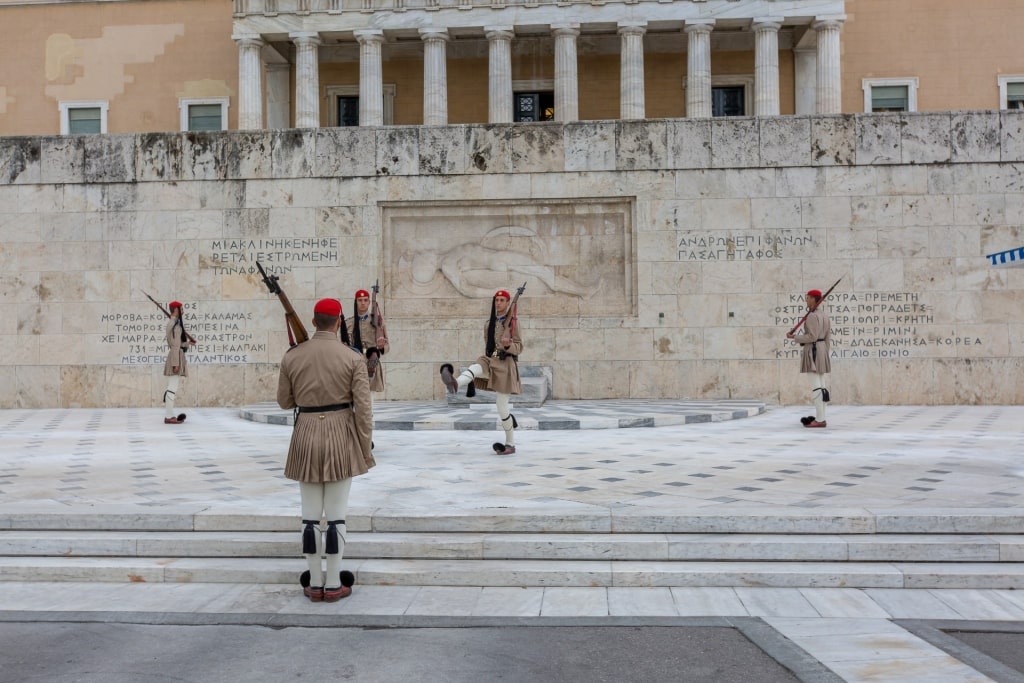
Tomb of the Unknown Soldier
To the west is Ermou Street, home to Athens’ best shopping, while to the west is Parliament and the Tomb of the Unknown Soldier, in front of which the changing of the aforementioned guards takes place every hour.
The slow-motion, high-stepping change is said to gently revive circulation given the guards stand stock still for their 60 minutes in the spotlight.
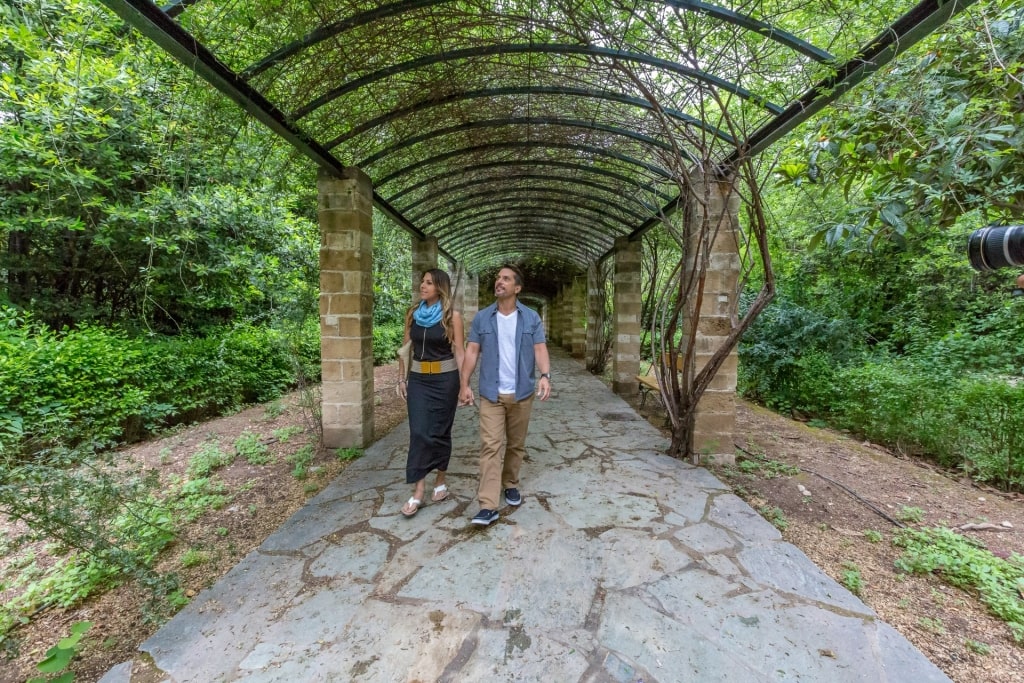
Athens National Gardens
South and west of Parliament is home to Athens National Gardens, the tree-lined walkways making for blissful respite in the heat of summer. Many Greeks will spend the afternoon around the park’s central lake sipping iced coffee and watching the ducks and swans on the water.
The Syntagma Metro station is also worth a look—it features several magnificent displays of Greek ruins found when the transport system was being excavated.
Zappeio/Stadio
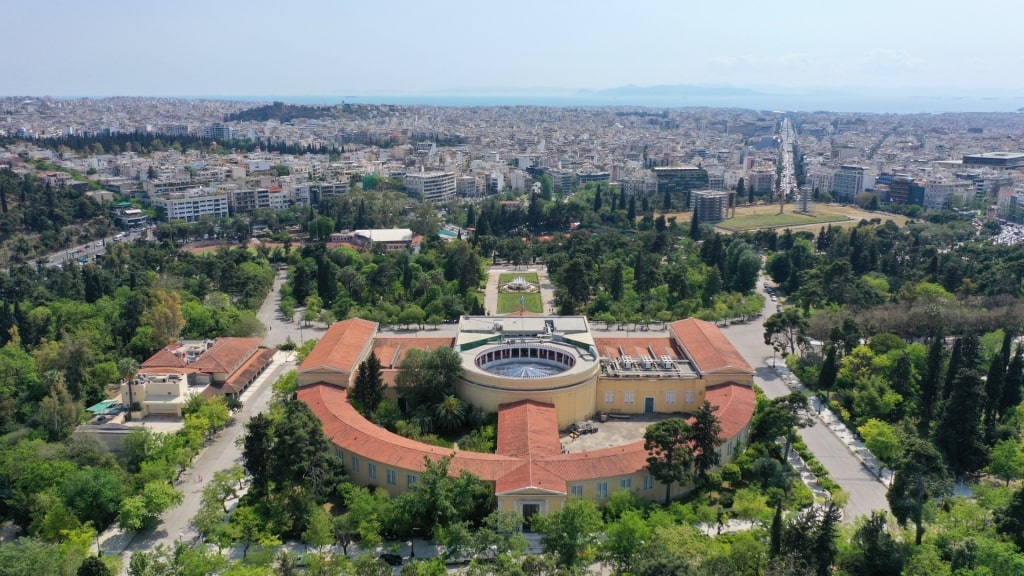
Zappeio
Almost contiguous with the National Gardens are Zappeion Gardens to the south. These grounds belong to a grand exhibition hall of the same name and are another pleasant place to walk and explore, thanks to the shade, several small ancient sites, a statue of renowned philhellene and 19th-century romantic poet Lord Byron, and a kids’ playground.
In summer, there’s also an open-air cinema, Aigli, for a quintessential Athenian experience, offering table service, including wines and beers.
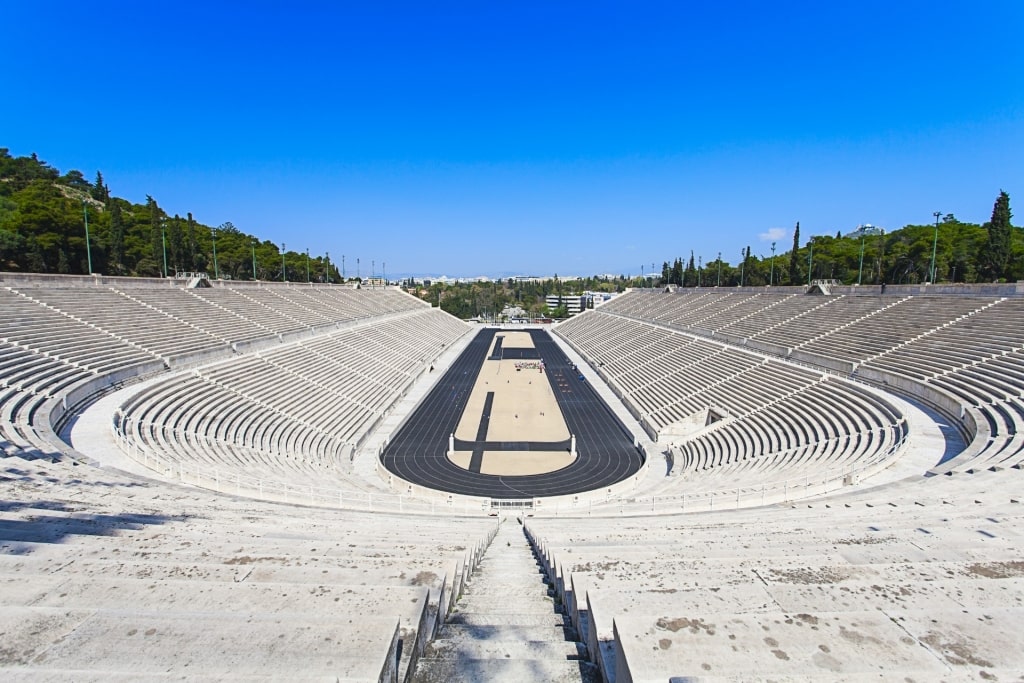
Panathenaic Stadium
A walk through the gardens also leads to the magnificent Panathenaic Stadium (also known as the Kallimarmaro, which means “beautiful marble”). This was the site of the first modern Olympics in 1896 and is backed by the verdant Ardittos Hill.
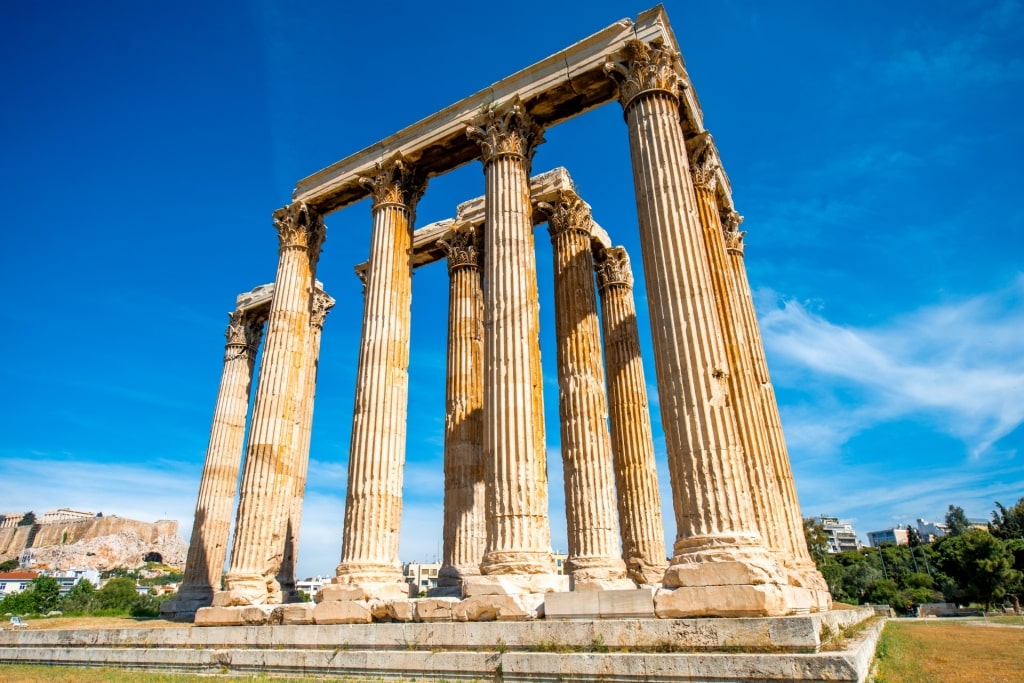
Temple of Olympian Zeus
Walking back west along Vasillisis Olgas Avenue, you’ll pass two of Athens’ other main ancient sights: the Temple of Olympian Zeus and Hadrian’s Arch, a monumental gateway built to celebrate the Roman Emperor in 131AD.
Read: Three Days in Athens
Kolonaki
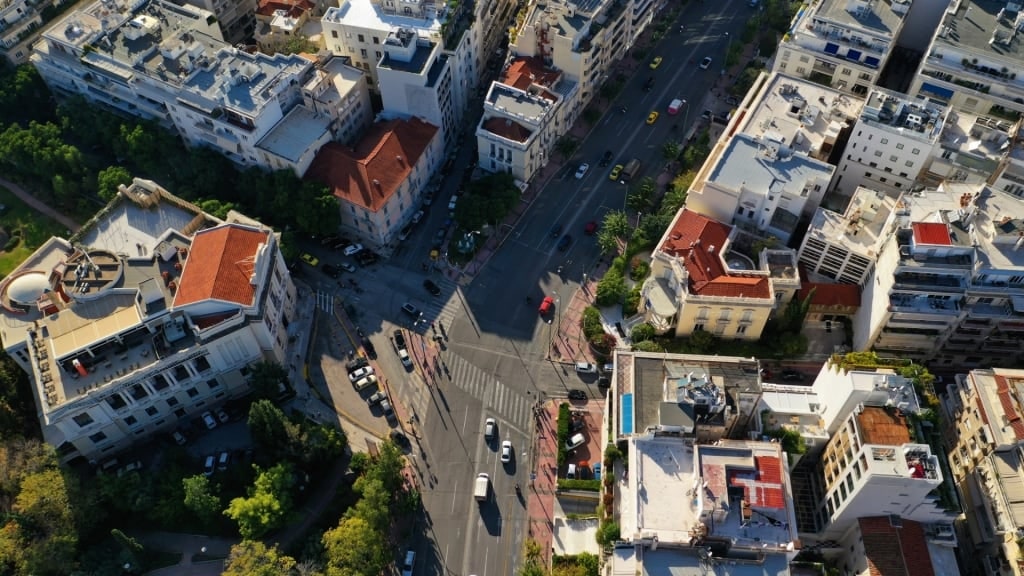
Kolonaki
Central Athens’ plushest neighborhood is upmarket Kolonaki, home to several embassies, high-end shops, the British Council and a handful of museums and galleries.
Top of these is the Benaki Museum on Vasilissis Sofias Avenue, set in an elegant neoclassical mansion that belonged to a renowned art collector. It is now open to the public with displays on Greek culture and art through the centuries.
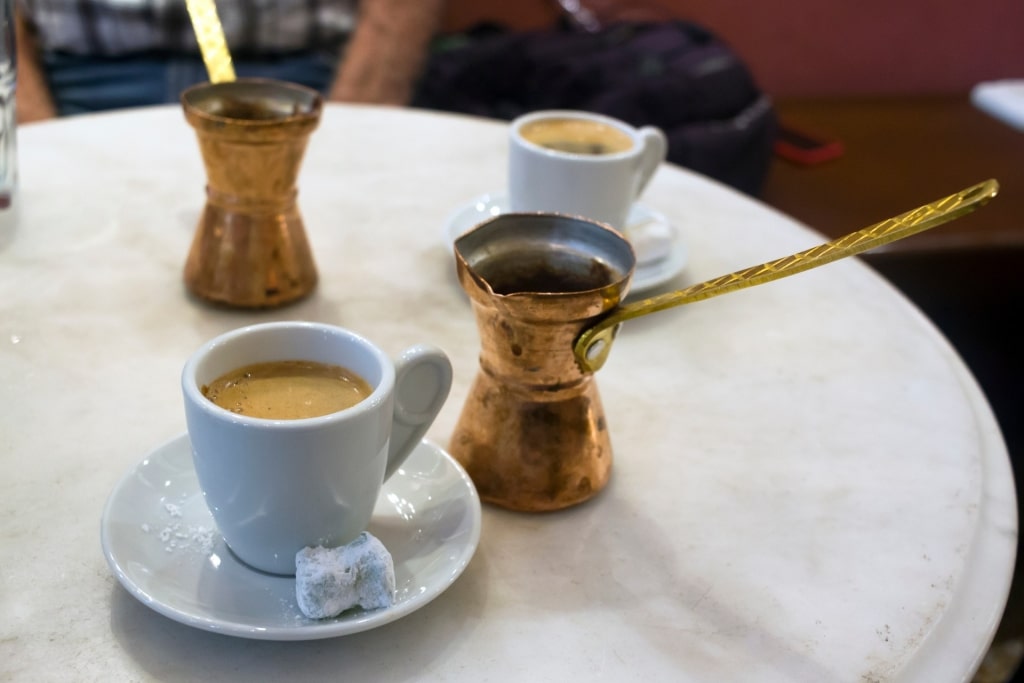
Coffee
The height of a visit to Kolonaki, though, has to be people watching in one of the cafés that line Kolonaki Square, the place to be seen in Athens. Simply take a seat, order a coffee and nurse it for an hour or two (Greeks always take time over coffee) to watch the world go by.
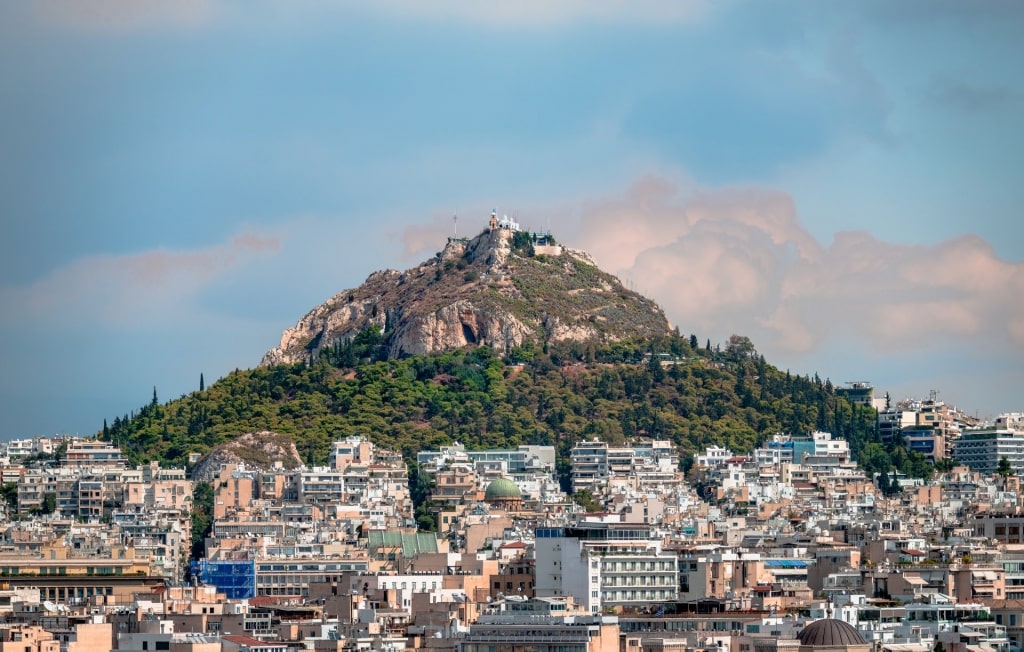
Mount Lycabettus
For those looking for something more active, Kolonaki sits in the foothills of Mount Lycabettus, one of the best hiking spots in Greece. Surrounded by pine forests, this limestone hill reaches around 1,000ft and is the highest point in central Athens.
You can hike through the forests to the summit for amazing views out to the nearest islands, or reduce the effort by taking a funicular railway to the top. Up here, you’ll find the 19th-century Chapel of St. George and a restaurant.
Plaka
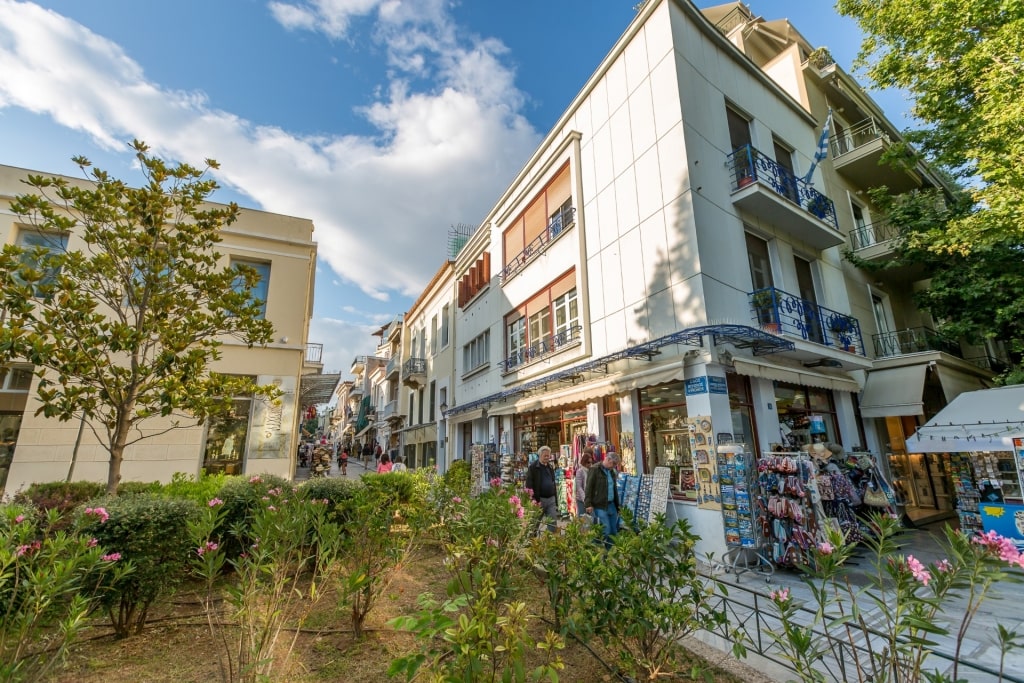
Plaka
One of Athens’ most traditional neighborhoods, Plaka sits in the foothills of the Acropolis, the magnificent world-renowned icon that Greece is known for, topped by the iconic, fifth-century BC Parthenon.
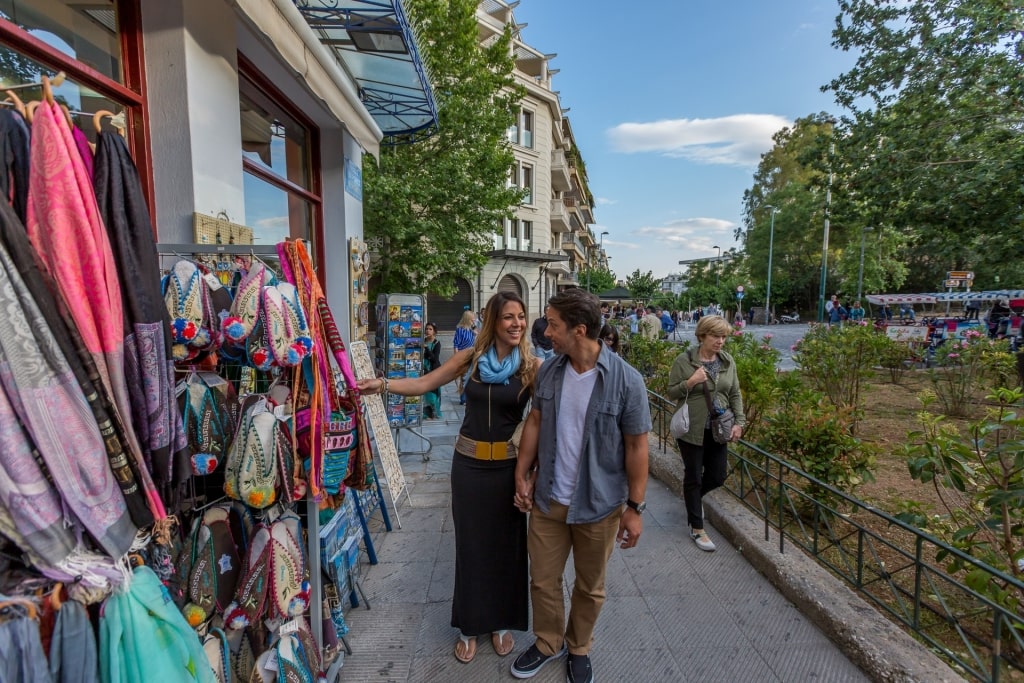
Plaka
Thanks to narrow, cobblestoned streets lined with family-run tavernas, and shops selling everything from high-end jewelry to Greek souvenirs, Plaka has something of a village feel.
This is nowhere more apparent than in the sub-neighborhood of Anafiotika, where the whitewashed cubic houses give off a distinctly Greek Island vibe, far different from the bustling city below.
As well as the Acropolis itself, there are several other ancient Greek landmarks of note here, including the Ancient Agora and the Roman Forum.
Acropolis
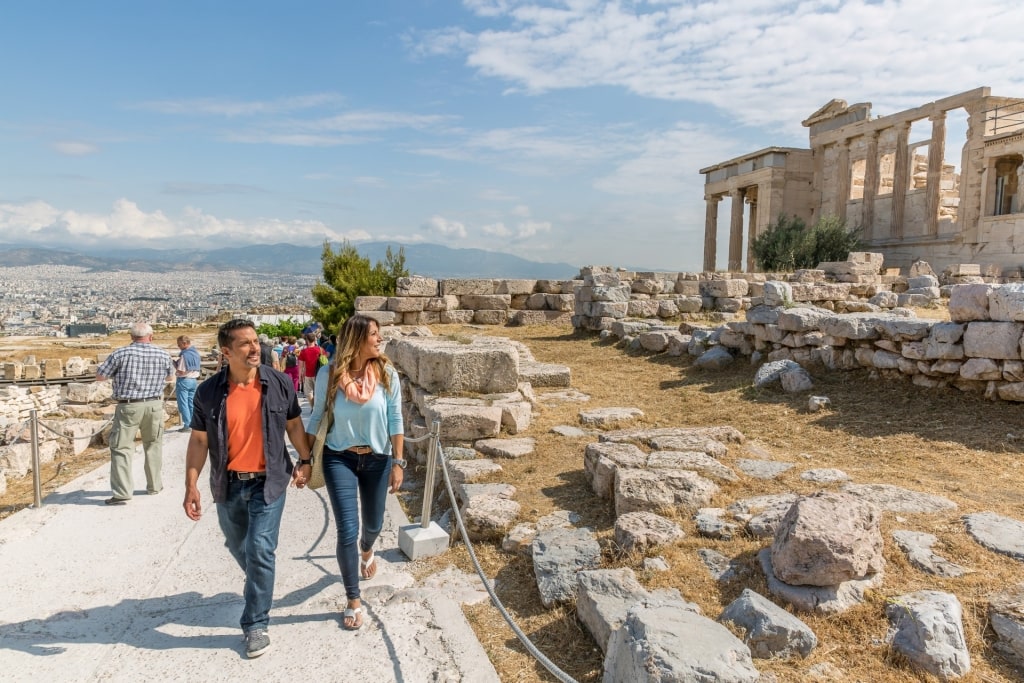
Acropolis
While you certainly get some of the best views of the Acropolis from Plaka, which lies to the north, the entrance to the landmark itself is on the south side of the monument, opposite the tree-filled slopes of Philopappos Hill.
The walk to the Parthenon-topped summit is not particularly long but can be a challenge thanks to well-worn, shiny marble steps in places, especially in the heat of summer. Sturdy shoes and water bottles are recommended, but make the effort if you can: seeing the Parthenon up close sends tingles up the spine.
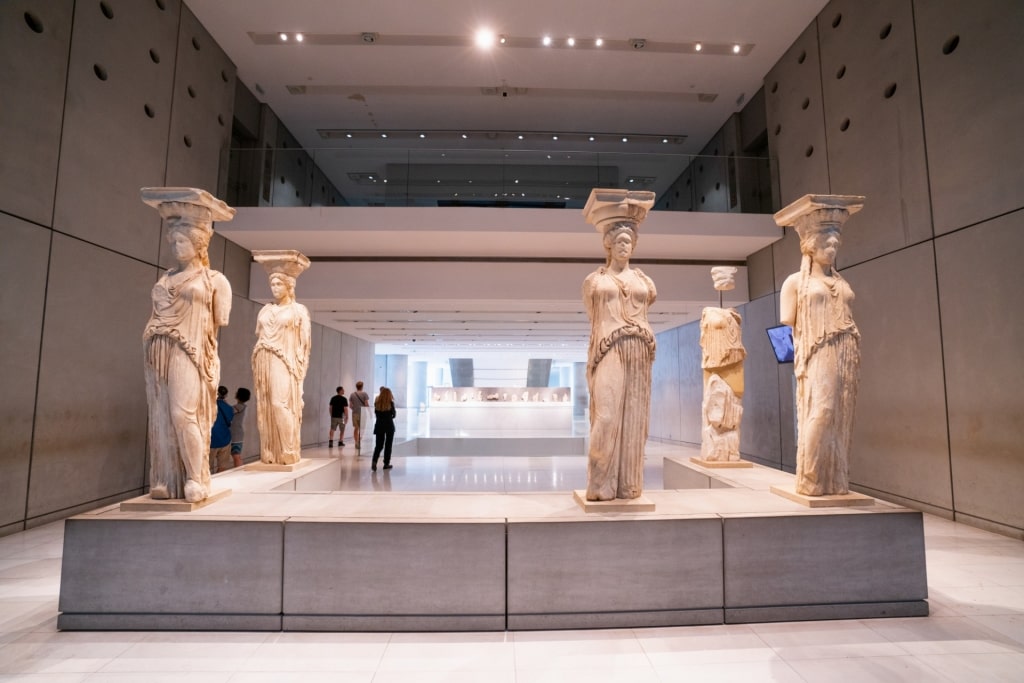
Acropolis Museum
As well as the Acropolis itself, there are a number of other must-sees to tick off in this neighborhood. One of the best museums in Europe, the thoroughly modern Acropolis Museum was built with glass floors to reveal excavations underneath.
Don’t miss the quite magnificent Odeon of Herodes Atticus, a restored theater from 161AD that still houses performances in an evocative atmosphere throughout the summer.
Philopappos is also worth exploring if time allows. A walk around the paths through the hill’s pine trees reveals the Pnyx, which was home to some of the earliest democratic assemblies dating the fifth century BC, and the open-air Dora Stratou Dance Theatre, which hosts traditional performances during the warmer months.
Monastiraki
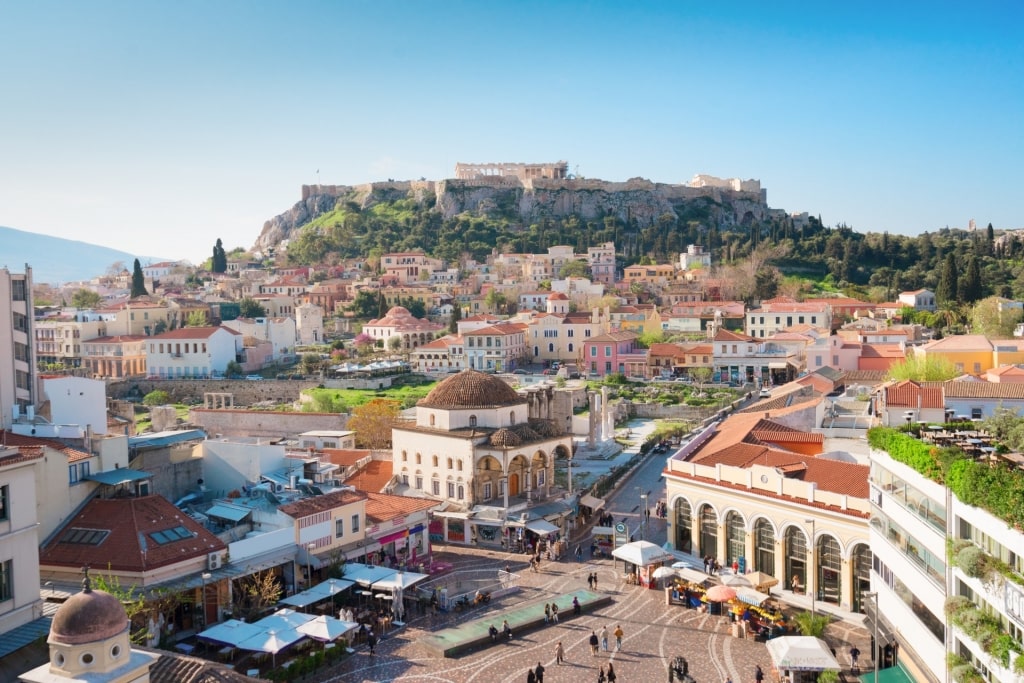
Monastiraki
As Ermou Street winds its way westwards north of Plaka, it eventually arrives in Monastiraki Square, the start of the Athens Flea Market. The main thoroughfare here is Ifestou Street, lined with shops and stalls selling leather goods, slogan t-shirts, jewelry, shoes and much more.
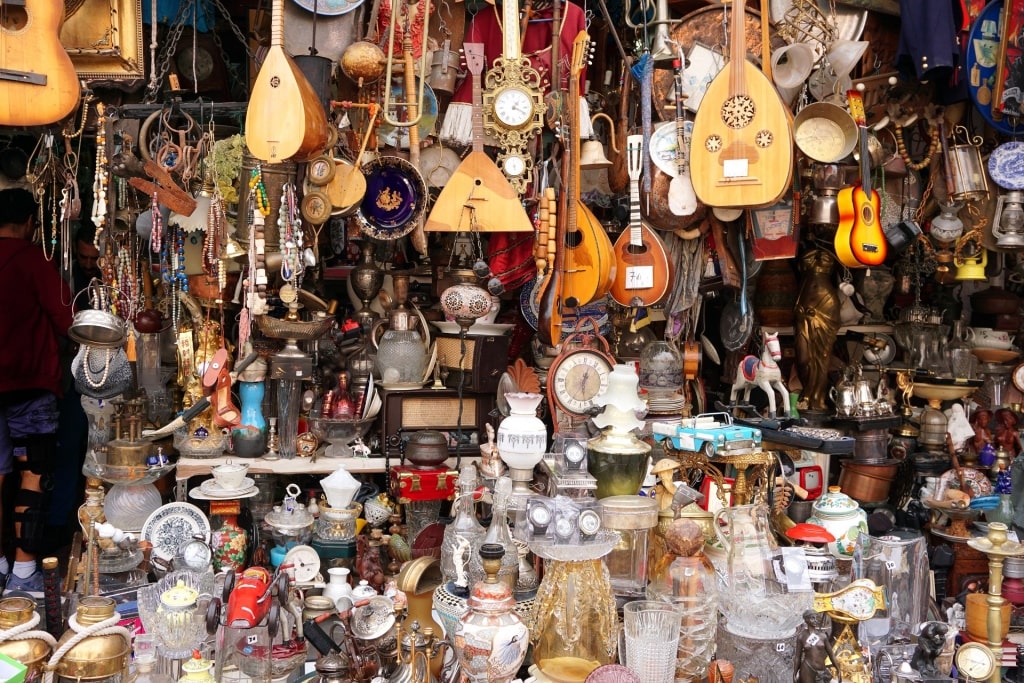
Antique shop in Monastiraki
The further you descend into this haggling haven, the more authentic the shops become, selling old coins, antiques, furnishings and artwork, especially if you veer off the main street into several small alleyways.
At the very bottom of Ifestou Street, there’s a small tree-covered square with a couple of cafés, perfect for a refreshing drink after a hard morning’s bargaining.
Omonia
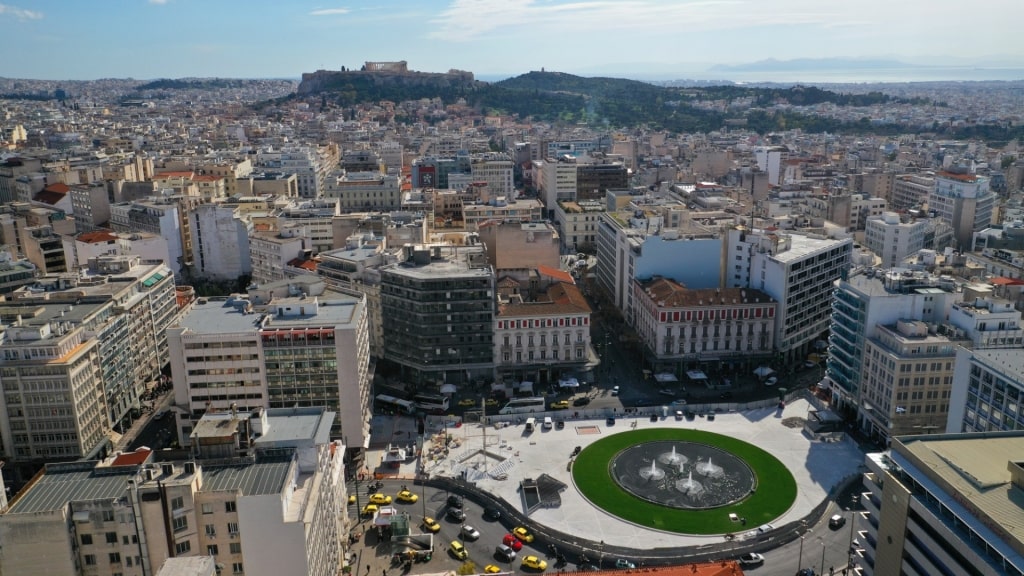
Omonia
Omonia is not strictly a neighborhood, but rather a series of streets that radiate from the central Omonia Square.
Once the northernmost point of central Athens, the square has had varied fortunes over the years, going from hip 60s hangout, through darker times in the no-go late 90s, to the more modern, multi-ethnic quarter seen today.
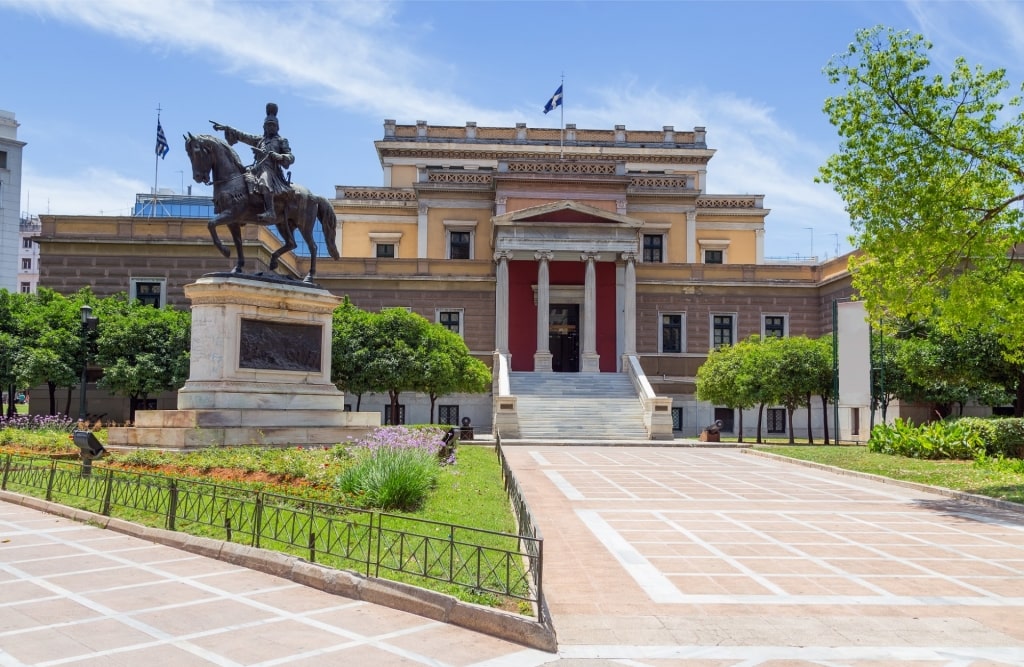
National Historical Museum
The square itself is home to an impressive fountain. From here, head down Agiou Konstantinou Street for the National Theater of Greece, Stadiou Street for shopping and the National Historical Museum, and Athinas Street for the quite wonderful Central Municipal Athens Market. In this series of alleys and indoor arcades, you can buy fruit, spices, dried goods, fish, and meat.
Find one of the tavernas at the end of the aisles in the meat market for the freshest cuts cooked to perfection—it’s where the butchers themselves hang out and there can be no better recommendation for the quality of the food.
Thisseio and Psyri
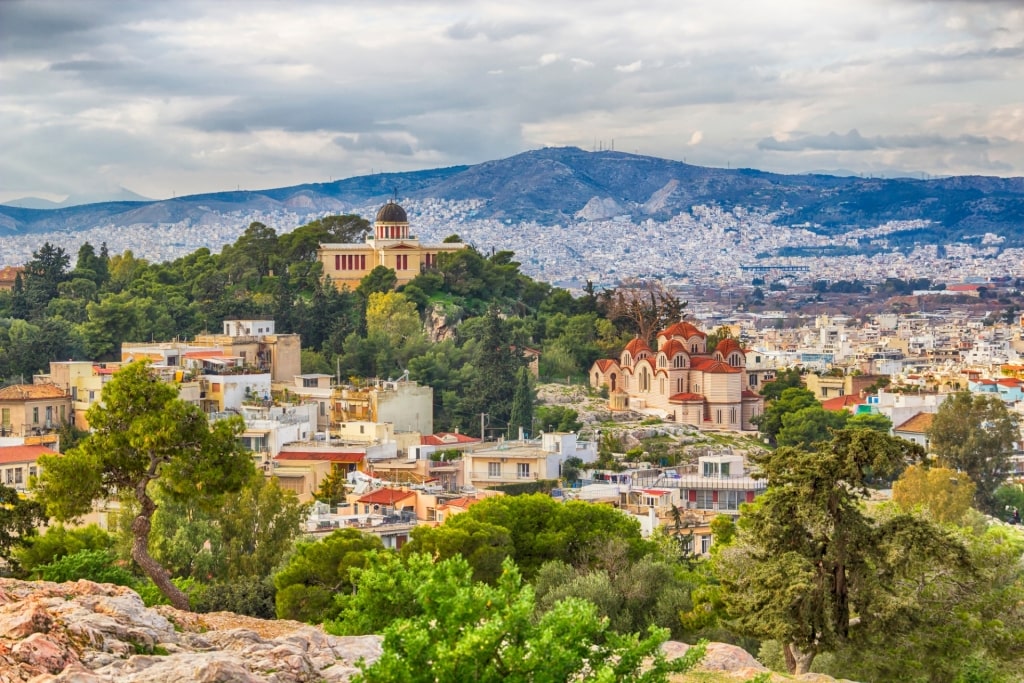
Thisseio
Technically two different neighborhoods, these two side-by-side locales that sit north and west of the Acropolis merge into each other, and the vibe is very similar in each. In short, if you are young-ish, Greek and hip, this is where you hang out in the city.
Winding streets are lined with neoclassical mansions and houses that have been converted into vibrant, buzzing cafés, bars, and restaurants, each one trendier than the last.
In Psyri, most of the action takes place around Iroon Square, where there are plenty of live music venues. To get a gritty insight into alternative Greek culture, seek out a bar playing rembetika, Greek Blues.
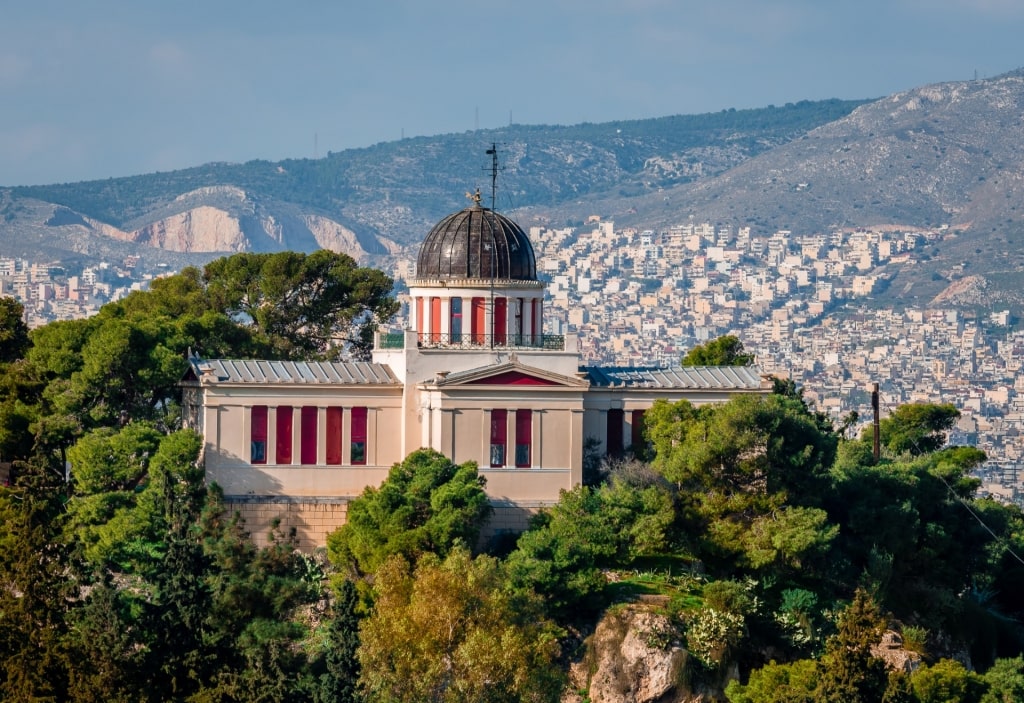
National Observatory of Athens
If there’s a difference between Psyri and Thisseio it’s that the latter is slightly more conservative—think cozy wine bars, and restaurants with Acropolis views. It’s also home to several places worth checking out in the daytime, thanks to guided tours at the National Observatory of Athens, and historical artifacts at the Herakleidon Museum.
Kifisia
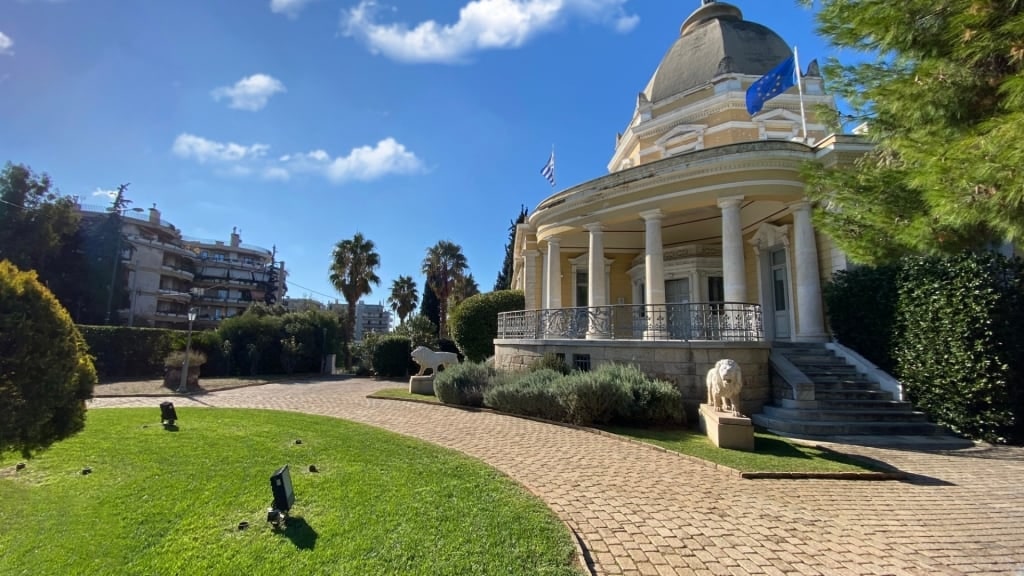
Kifisia
Athens’ northern neighborhoods tend to be more residential, but if you do decide to head towards the foothills of Mount Parnitha, the vast Greek mountain range that guards the northern suburbs, Kifisia should be your port of call.
Its streets are lined with designer boutiques and art galleries, while dining options range from family-run tavernas to more modern restaurants focusing on organic local produce.
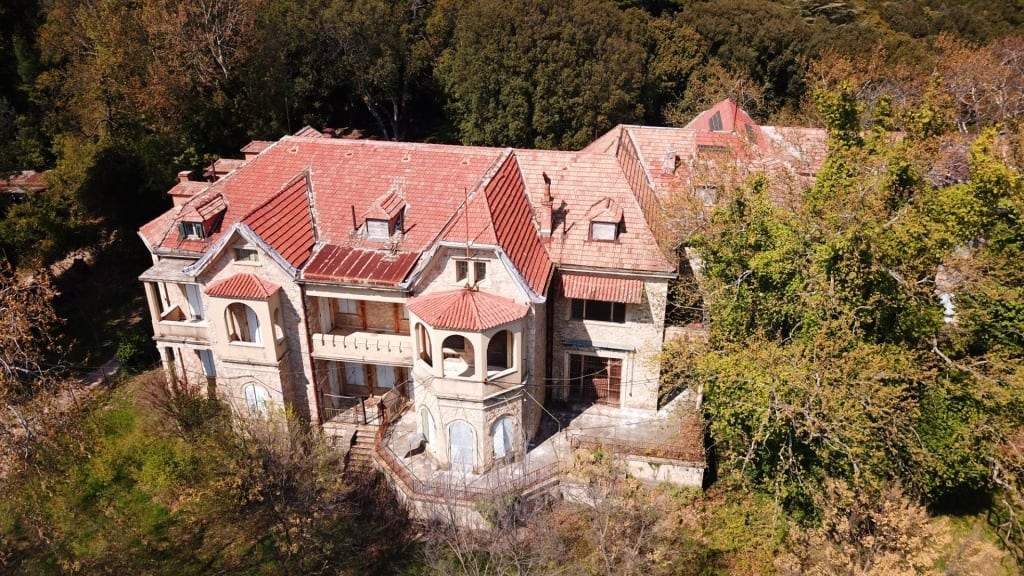
Royal Palace of Tatoi
The suburb is also home to the fine Goulandris Natural History Museum, while the former Royal Palace of Tatoi is a few miles to the north. This run-down estate has largely been reclaimed by the surrounding forests but it’s home to hiking and mountain bike trails.
Piraeus
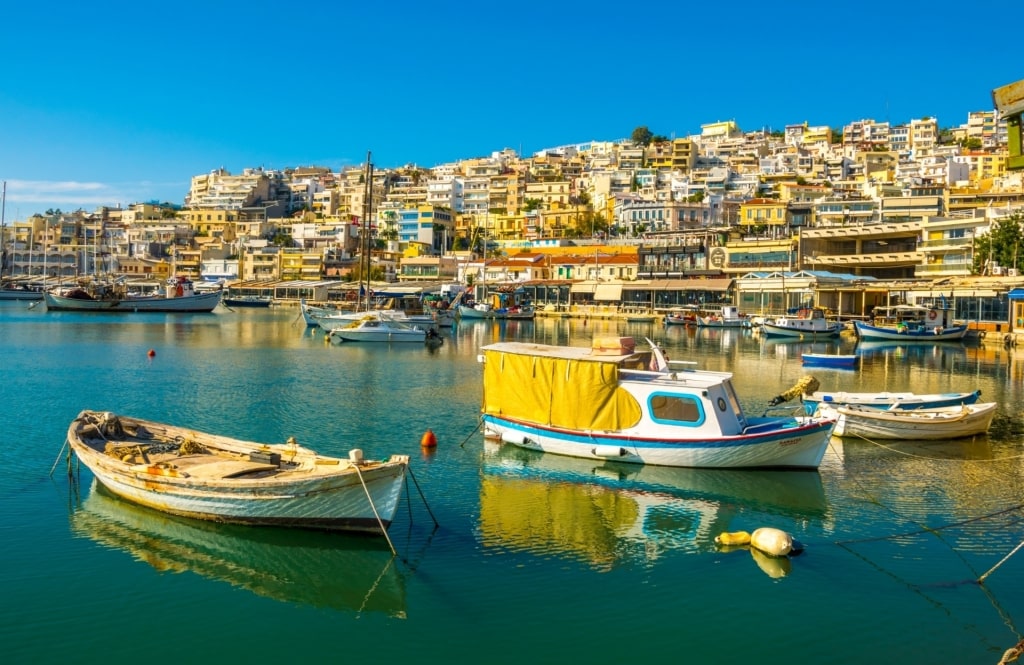
Piraeus
Whisper it if you call Piraeus a neighborhood or suburb of the Greek capital; to the local Piraeots, the port of Athens is a separate city and a fiercely independent one.
Nowhere is the rivalry more alive than in Greek soccer, where Olympiakos Piraeus and Panathinaikos of Athens have been deadly rivals since records began.
The harbor here can seem manic to the untrained eye—it’s the largest passenger port in the Mediterranean, packed with ferries departing for the islands.
The atmosphere is vibrant with policemen directing traffic, crowds thronging around ticket outlets, and street vendors calling out their wares above the sounds of seagulls and ships horns.
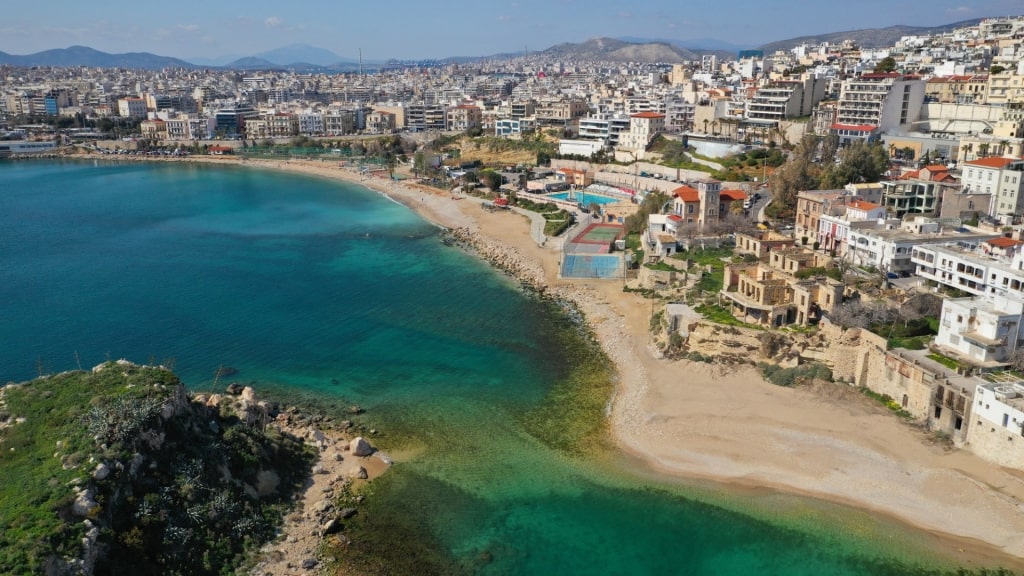
Pasalimani
Piraeus is evocative, sure enough, but there’s much to explore beyond the port. The Hellenic Maritime Museum is home to books, flags, weapons, and a decommissioned submarine, while high-end shopping can be found along pedestrianized Sotiris Dias Street and on the streets around the slightly quieter port area of Pasalimani, also known as Marina Zeas.
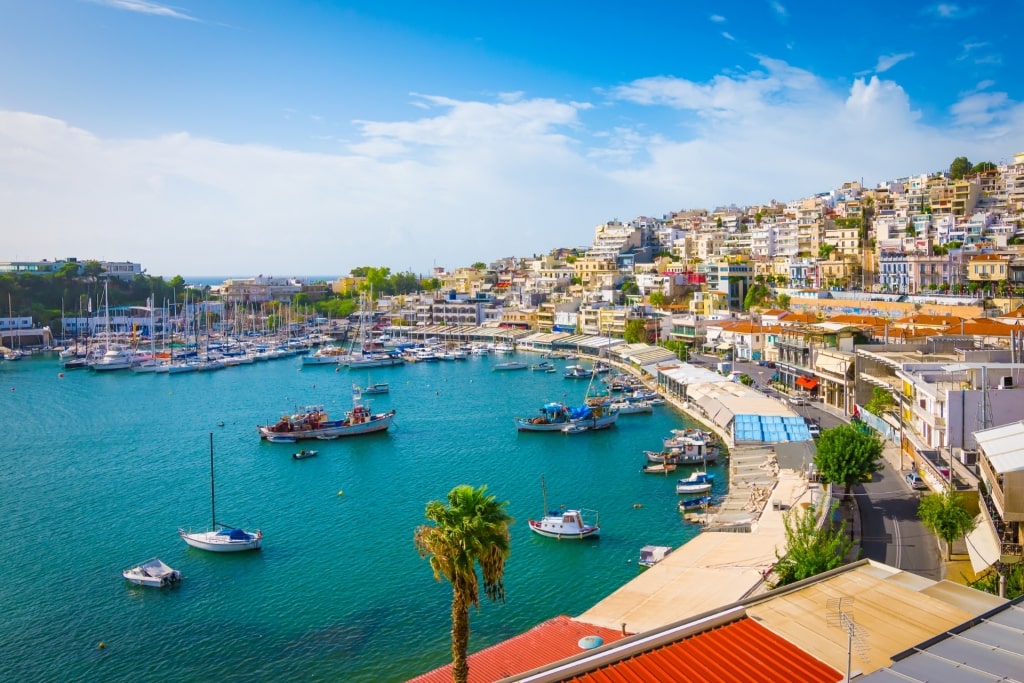
Mikrolimano
Follow the harbor around to Mikrolimano, a picturesque marina with fishing boats and home to Varoulko, one of Greece’s few Michelin-starred restaurants. If you’re in the city and Olympiakos has a home game, pay a visit to Stadio Karaiskaki to get an idea of just how passionate Piraeus is.
Glyfada
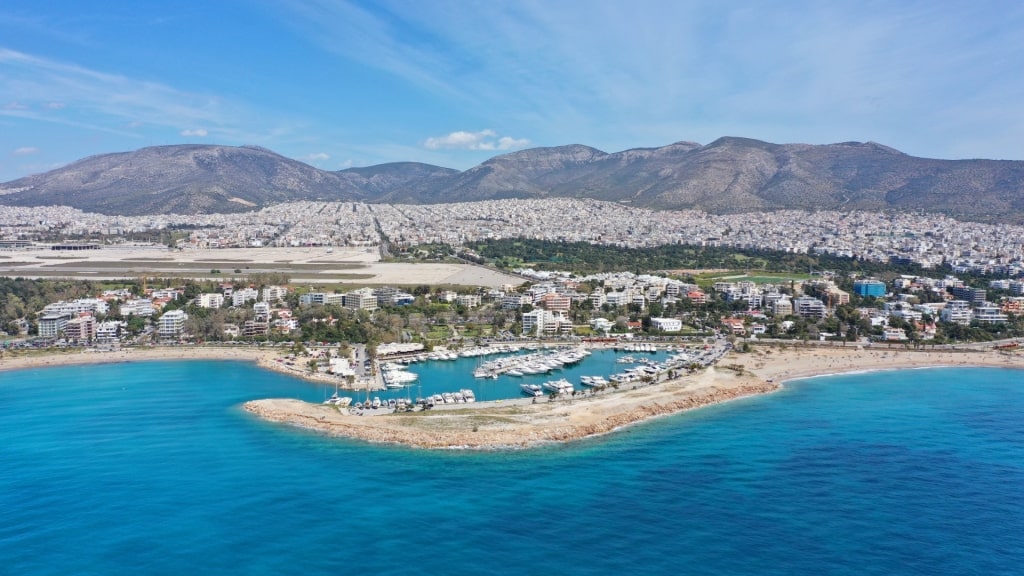
Glyfada
If it’s summer and you are looking for a restaurant, bar or club in the city, it has most likely moved to the suburb of Glyfada for the warmer months.
This cosmopolitan seaside resort sits along the Saronic Gulf and is home to four marinas housing everything from a small fishing fleet to the most incredible superyachts.
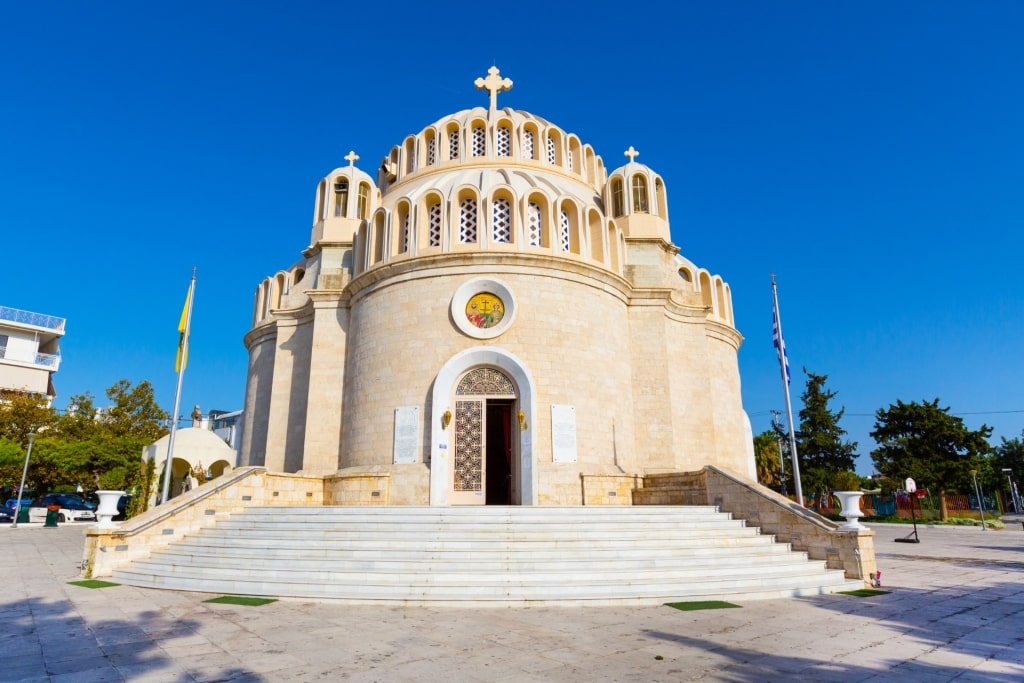
St. Constantine
At the center of the town is the statuesque St. Constantine and Helen Orthodox church, set on a pine-tree-lined square with views out to sea.
From here, the main thoroughfare, Metaxa Street, houses international and local boutiques, galleries, jewelry stores and tourist shops, plus an incredible amount of cafés and bars, all of which are constantly packed with locals watching the world go by.
The town is also home to every fast food joint you can imagine, but for more local flavors, head to Konstantinoupoleos Street, colloquially known as Biftekoupoli or Meatball City.
George’s Steakhouse, a classic hangout dating from the 1950s, is a great choice and famed for its grilled lamb chops, sold by the pound.
Read: What to Eat in Athens
Vouliagmeni
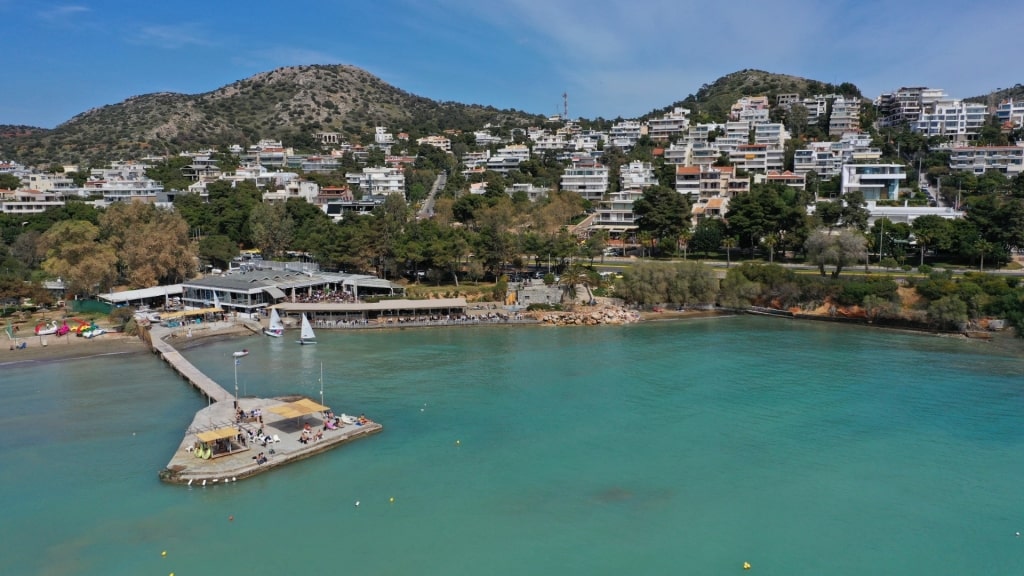
Vouliagmeni
A few miles further down the coast from Glyfada is yet another high-end coastal suburb, Vouliagmeni, one of the best neighborhoods in Athens for a laid-back summer break.
Set on a pine-covered peninsula known as Laimos, it’s a favored choice of the capital’s elite, especially in summer months. They flock here for the Greek beaches and yacht clubs that line the shores, as well as upscale shopping and the hip nightlife scene.
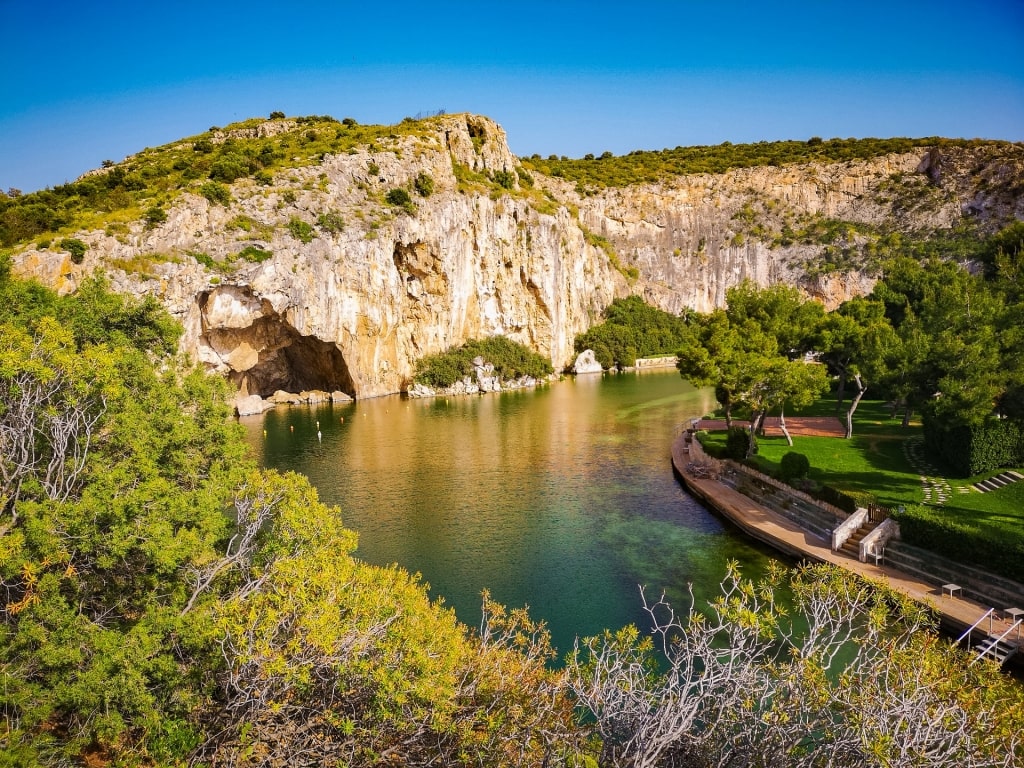
Lake Vouliagmeni
Aside from being home to some of the best beaches in Athens, the neighborhood is also home to the ruined Temple of Apollo Zoster and the mysterious Lake Vouliagmeni.
This natural lake is fed by mineral-rich underground currents from subterranean streams on Mount Hymettus and the high mineral content and constant year-round temperature of the lake make it a favorite of those who believe in the restorative properties of natural spa waters.
Read: Unforgettable Day Trips From Athens
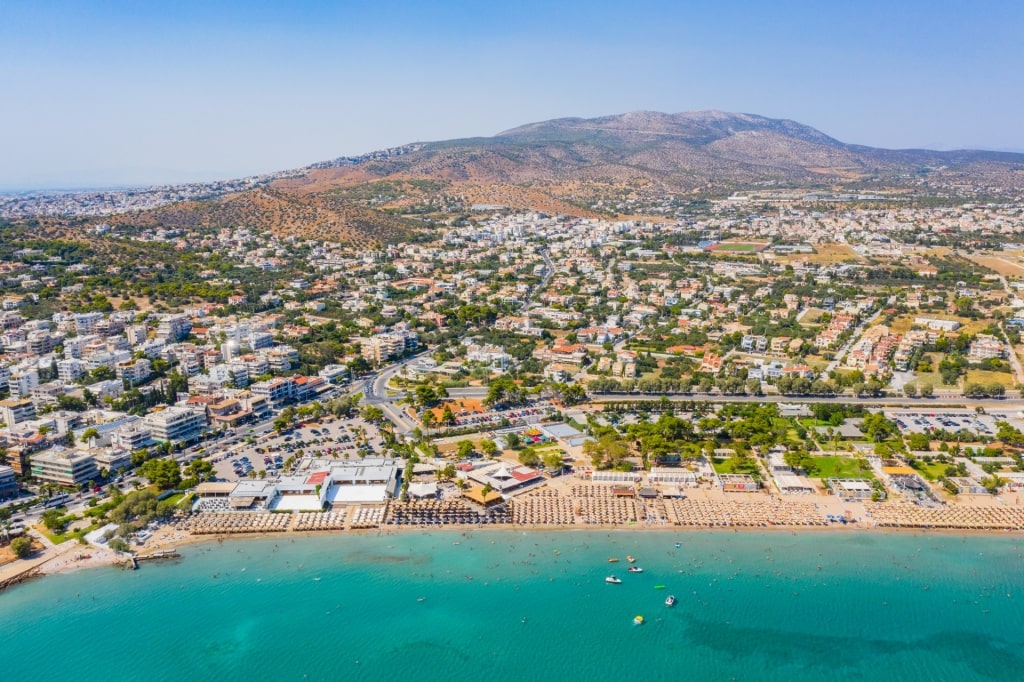
Athens
Ready to get better acquainted with the Greek capital? Arrive in style on a cruise to Athens with Celebrity. Browse itineraries online and book your own Greek odyssey.
